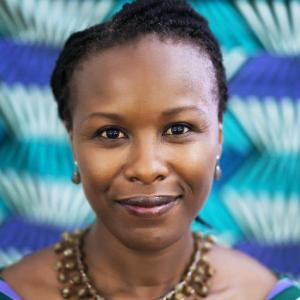Salutations:
The Director Genel of Uganda AIDS Commission
The Director General of Health Services
Members of the Top Leadership of the Uganda Police Force
Members of the Equity Committee
Colleagues from the UN system
Ladies and Gentlemen
I am pleased to be here with you today at this dialogue with the Top Leadership of Uganda Police Force on the burden of HIV in Uganda and the need for continuity of services and dissemination of HIV Prevention messages.
The Uganda Police Force plays such a pivotal role in keeping all citizens and residents safe and secure. As you enforce the law, protect public order and the public itself, you also look after our well-being. On behalf of the UN System in Uganda, I would like to express our gratitude for the work that you do for the country.
I am pleased to state that our collective work to end AIDS by 2030 as a public health threat is on the right track. It is on the right track because of the collective and relentless efforts by government, development partners, civil society, communities, and stakeholders, including your effort and support to the HIV response. There are 1.4 million people living with HIV in Uganda and almost 1.2 million people on HIV treatment. So, we have about 86% of people living with HIV on treatment and that is a great achievement. But we are still struggling with new HIV infections, about 52,000 new HIV infections in a year. Young people, in particular young women, are the most affected and know very little about HIV.
During this dialogue you will be informed about the achievements against the global targets to end AIDS as a public health threat and the journey that Uganda has travelled since the 1980s when “SLIM” was killing so many people to today, when we can say that it is possible to end AIDS. But our journey to help Uganda achieve her target of ending AIDS by 2030, needs to be deliberate and fast tracked.
In Uganda, the people who are at risk of acquiring HIV are young people, children, adolescents who continue to be further marginalized due to inequality, poverty, stigma, and discrimination among other things. These populations are key to the HIV response and so we must focus our interventions on them and tailor our effort to reach them with services. When we go further and segment these population groups you realize that HIV is not a threat to them simply because of their age group – it is because they have been left behind in our HIV response.
In addition, the UN is deeply concerned about the unintended public health consequences of the Anti Homosexuality Act (AHA) signed in May 2023. We know that social exclusion, stigma, violence, and discrimination limit access to services, including HIV prevention and treatment services, and increase risks. Unfortunately, we are seeing this play out in Uganda, with recent data showing a reduction in the utilization of health and HIV services.
If this trend continues, it threatens the gains we have made thus far in our efforts to eradicate HIV. For example, there is evidence globally that in environments were homosexuality is criminalized and enforced – for example with arrests of suspected LGBTQ+ persons – rates of HIV/AIDS are significantly higher.[1]
More broadly, the UN remains gravely concerned that the AHA further stigmatizes and targets a particular group based on their sexual orientation and gender identity. We are hearing reports of discrimination and harassment, evictions and violence, persecution and stigma against perceived members of the LGBTQ+ community and against those who seek to advocate for or provide services to affected individuals. This runs contrary to our understanding of the Government’s objectives and commitments to equality, non-discrimination, and the principle of leaving no one behind.
In this context, removing barriers that keep certain populations from accessing health becomes crucial more than ever.
We applaud your efforts to protect all members of the public from violence and harassment and we appreciate the Government’s efforts to include safeguards against discrimination in circulars issued by, among others, the Ministry of Health and the Directorate of Public Prosecutions. We call upon your support in making sure that the circulars are disseminated, respected, and practiced. This is pivotal in ensuring that everyone is safe and secure.
It is my hope that our dialogue today can focus on how each of us can contribute to the HIV response and what we can do to remove inequalities that hinders people from accessing health and HIV services.
As I conclude my remarks, let me once again thank you for taking time to attend this sensitization meeting. And to also thank the Uganda AIDS Commission for organizing this very important meeting.
I look forward to a productive discussion.
[1] See, e.g., The Path That Ends AIDS: UNAIDS Global AIDS Update 2023. Geneva: Joint United Nations Programme on HIV/AIDS; 2023.




